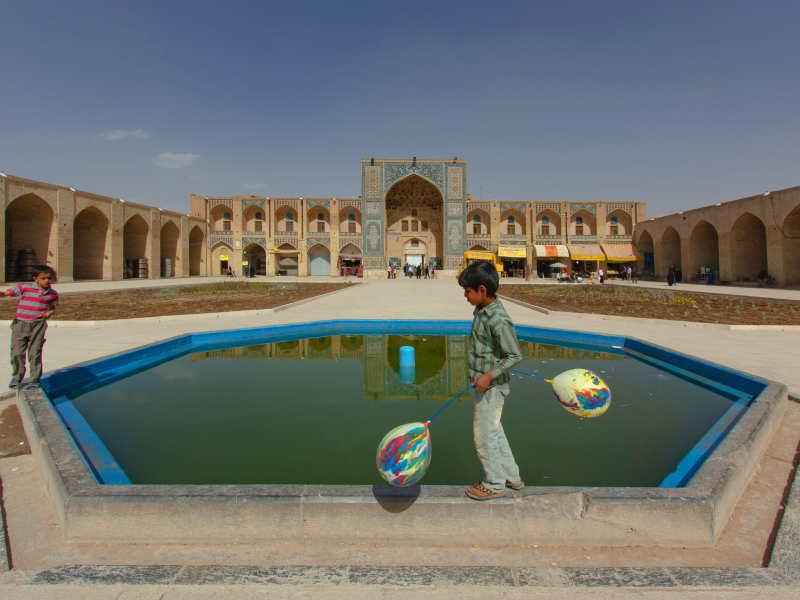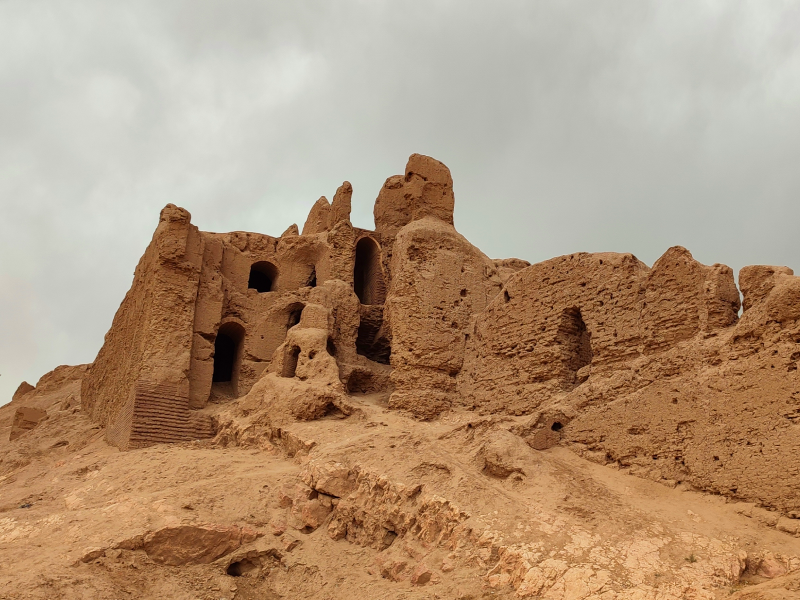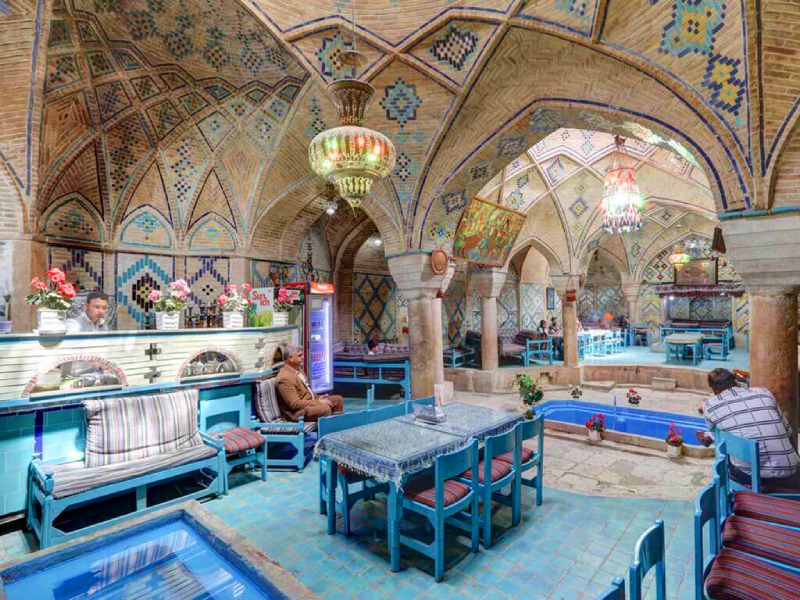Top Things to Do in Kerman
Kerman, a graceful city in Kerman Province, is one of the oldest cities in the world, and there are many interesting things to do in Kerman. Kerman, the birthplace of one of the oldest civilizations in the world, is very popular among historians and archeologists. The cultured city of Kerman is the cradle of Iranian civilizations and holds numerous historical attractions. One of the most important ancient buildings of this city is its historical citadels.
We have provided you with a list of the best tourist attraction sites of Kerman for an enjoyable trip.
Bam Citadel
Bam Citadel, known as the largest clay structure in the world, is located in the historical city of Bam in Kerman Province in the southeast of Iran. This building was established in the Sasanian period and is located on top of a hill northwest of the ancient city of Bam. This area was at the crossroads of the Silk Road and the roads leading to Central Asia, the Persian Gulf, and Egypt.
The 7th to 11th century AD was the heyday of the citadel as it became a thriving commercial center and aided the trade and commerce of silk and cotton. Moreover, the large Bam Citadel is listed in the UNESCO Cultural Heritage as the largest adobe clay structure. Unfortunately, around 80% of the Bam citadel was destroyed by an earthquake in 2003. But the good news is that the citadel was rehabilitated in the following years.
Moayedi Icebox
Kerman houses a large number of attractions, most of which show the history and architecture of the past that tell different stories about the life of the ancient people. The Moayedi icebox, with a special architectural design, was under the strict supervision of ice makers many years ago. This Icebox monument provided part of the ice needed by the people of Kerman for a long period of time.
Examining the mechanism of traditional ice-making and the method of storage of ice in all seasons shows the intelligence and creativity of the people who lived in that era. The use of this icebox was before the invention of electricity and ice factories, so after the progress of technology, the Moayedi icebox was left untouched along with other iceboxes. Although, its remnants can still be visited.
GanjAli Khan Complex
GanjAli Khan Collection of Kerman is one of the most famous sightseeing spots in Kerman, where unique historical buildings stand together.

This complex includes a square, a caravanserai, a bath, a school, a mosque, and a water reservoir. This archeological complex is one of the historical monuments that you must see during your trip to Kerman.
The GanjAli Khan complex of Kerman dates back to the Safavid period. Ganj Ali Khan was one of the renowned rulers of Kerman who ruled this city for about thirty years. He created many buildings in this city in order to develop Kerman. There is a collection of buildings in Ganj Ali Khan complex in Kerman.
The most important of which is the Ganj Ali Khan Bathhouse, which holds a long history. In addition to seeing the traditional beauty of the structure, by walking inside this historical monument, you can also learn about the culture of the early days of Iran. If you are interested in history, you will enjoy seeing this historical complex.
The Ganj Ali Khan complex of Kerman has an area of about 11 thousand square meters. The architect of the complex, Mohammad Memari Yazdi, used the Isfahani architectural style to erect the buildings in this area. The value of this collection in Kerman is great, and you should definitely visit Kerman and see this building.
Jabaliyeh Dome
Almost all tourists who travel to Kerman will visit the Jabaliya Dome as one of its main destinations. The date of the construction of the building is unknown, but by looking at its structure, it might have belonged to the Sassanid period and was later renovated at the beginning of the Islamic period.
Some believe the architects of the early Islamic period built it, which was inspired by the architecture of the Sassanid period. Jabaliya Dome is situated in the eastern part of Kerman city. The dome is the only stone building in Kerman made of stone and plaster. It’s an octagonal building made of stone and has a dome in the shape of two crescents. The inner diameter is 18 feet, which has a circular tip. The dome was registered as a national monument in 1937 in Iran, then was renovated in 2004, and in 2009, it was converted into a stone museum.
Many archeology experts who work on this historical monument have agreed that the Jabaliya Dome in Kerman province does not tell its true history, and this has become a reason for experts to tell different dates for this historical monument.
Ghal’eh Dokhtar (The Maiden Castle)
There are two ancient castles near the city of Kerman, both of which are called the Maiden Castle. One of these two castles is made of mud and is built on the heights between Zarisaf and Sahib al-Zaman Mosque. The other castle is made of stone and is located north of the city of Kerman.

This building was built during the mid centuries of the 1st millennium BC. Ghal’eh Dokhtar Castle dates back to the Medes period. This castle is a symbol of the goddess Anahita (one of the Iranian-Aryan goddesses), who was the goddess of water and fertility. Ghal’eh Dokhtar mud castle has arches that surround the area of the castle.
The perimeter of the tower and ramparts and fortifications of the castle are in the form of a complete circle, which is more than three kilometers wide. The Maiden Castle, an archeological site in Kerman, is truly one of the oldest historical works of the city.
Rayen Citadel
A must-see place in Kerman is the Rayen Citadel. If you drive to the outskirts of Kerman, about 100 km, a magnificent citadel will appear above the slopes of the Hezar Mountains, called the Rayen Citadel. Although the name of this citadel is not very popular, the Rayen Citadel is the second largest adobe building in the world.
The term “Rayen” refers to a canal with a gentle slope. Others believe that the citadel and the city of Rayen got their name from a soldier named “Rayen” during the reign of Ardeshir II.
The type of architecture and the relics found in this place illustrate the history of the Rayen Castle, which dates back to the Sassanid era. You will be eager to visit this place once you see it from a distance.
Ebrahim Khan Complex
Like the Ganj Ali Khan complex, Ebrahim Khan Zahir al-Dawlah, the governor of Kerman, built a striking complex for the well-being of his people located in Kerman. The complex of Ebrahim Khan Kerman comprises a school, a bathhouse, a reservoir, and a traditional market that originates from the era of Fath Ali Shah Qajar of the Qajar dynasty.
The complex included in Iran’s national monuments list is considered one of the must-see places in Kerman, and it is interesting that today, after two centuries, Ebrahim Khan’s school, bath, and bazaar are still active.
Vakil Historical Bathhouse
One of the tourist attractions of Kerman is the famous Qajar dynasty bathhouse, which is located inside the grand bazaar of Kerman. This bathhouse, as a part of the Vakil complex, was built in the Qajar period in the 1800s by the order of the ruler of the Zand dynasty, Karim Khan Zand. The Vakil bathhouse was renovated in 1990 and is currently used as a traditional tea house.

The bathhouse was a very important place in the past. In the distant years, it was not possible to have a bathroom in every house, and for this reason, every ruler planned to build a bathhouse at the beginning of his reign so that the people of his country could bathe safely.
The artists of this period used limestone to decorate the interior of the bathhouse and have been able to turn it into an eye-catching building skillfully. Vakil Historical Bathhouse is one of the masterpieces of the Zandiyeh era, which is visited by many people today.
Haft Bagh Alavi Tourist Highway
The Haft Bagh Alavi Highway and Haft Bagh Mahan, a major sightseeing location in Kerman province, have become so popular that people from other provinces travel to this province to visit this place and use its recreational facilities.
The highway starts from Kerman and continues to Mahan district, and for this reason, it is also known as Haft Bagh of Mahan. In the mid-1990s, a plan was given to increase the tourism sector of Kerman province, and this plan was put into operation in 2001.
In this plan, the Haft Bagh Alavi highway of Kerman was established in an area of 1,300 hectares, of which 700 hectares were dedicated to green space, and this is the reason why, today, this area has become a beautiful and pleasant area in the province. The Haft Bagh Alavi gardens are about 28 kilometers long.
Since the Haft Bagh Highway was built to boost the tourism sector of Kerman and Mahan, various recreational, residential, welfare, religious, sports, and commercial sectors have been constructed inside it.
Kerman Grand Bazaar
As a national work of Iran, the Kerman Grand Bazaar starts from Arg Square and ends at Mushtaqiye Square; for this reason, it is the longest row among Iran’s bazaars. The Kerman bazaar was built from 1596 to 1619 during the reign of Shah Abbas of the Safavid dynasty.
Some architectural decorations of the Kerman bazaar are very distinguished from other Iranian bazaars, like the presence of the tallest windmills inside the market, which is world famous.
The surrounding buildings of the bazaar of Kerman were all created in connection with the bazaar. The Grand Bazaar of Kerman is a recommended place to purchase Kerman souvenirs and handicrafts.
Ganj Ali Khan School and Caravansaries
Ganj Ali Khan School and Caravanserai in Kerman is one of the masterpieces of the Safavid era, located in the eastern part of Ganj Ali Khan Square.

The reason why they put the names of school and caravanserai together is that this building was initially used as a school and for studying science, but over time it turned into a caravanserai.
Ganj Ali Khan Caravanserai has two floors. The first floor of the building, like other religious schools of the Safavid era, has rooms that are very similar to shops. The second floor of the caravanserai consists of small rooms built separately; however, they are connected to each other.
The cozy rooms on the second floor of the building have small spaces, and the windows of the rooms facing the courtyard of the caravanserai show a spectacular view.
Central Library of Kerman
The Kerman National Library belongs to the first Pahlavi period and dates back to 1929. This valuable library, a popular location in Kerman, is located on Shahid Rajaee Street and has a high and intricate pediment, a study place, a book repository, and research and computer departments.
Mohammad Ali Rawari, the architect of this building, constructed it as a spinning and weaving factory, which later became a library. This work was registered as one of Iran’s national works on 30 September 1999.
Harandi Garden Museum
Harandi House is one of the sightseeing places in the city center of Kerman and one of the remaining buildings from the Qajar period, where Iranian and non-Iranian architectural elements can be seen in a magnificent combination. This complex consists of a garden, a central building, and other sections.
Today, two archaeological museums and a museum of traditional instruments in the historical complex of Harandi welcome tourists.
Final Word
Kerman is one of the prominent and ancient cities of Iran, embracing many touristic and historical monuments. This is the reason why many tourists journey to this city every year. The old monuments of every city show its historical richness, and Kerman is no exception with a large number of valuable works. This historical province of Iran is considered the best tourism option in Iran due to the many historical attractions it embraces.
Are you planning to travel to Iran and looking for an Iran resort? Consider Matinabad Eco-resort.





Leave a Reply
Want to join the discussion?Feel free to contribute!